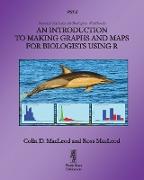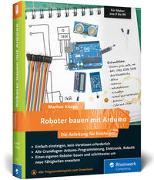An Introduction to Making Graphs and Maps for Biologists using R
BücherAngebote / Angebote:
This workbook introduces biologists to the key practical skills they need to create high quality graphs and maps in R. It is aimed both at students who are taking their first courses on data processing, analysis and visualisation and at biologists who wish to teach themselves how to use R. As well as providing a quick-start guide to using R itself, this workbook provides a series of practical exercises based on easy-to-follow flow diagrams that show biologists exactly how to do a variety of key tasks in it. These include:1. Creating your first graphs in R using the GGPlot package, including making basic graphs, such as frequency distribution histograms, creating high quality graphs suitable for inclusion in presentations and publications, creating different types of graphs from the same data set, and making graphs that display data from more than data series.2. Creating graphs to display groups of data using GGPlot, including bar graphs of count data, graphs of summary statistics for one variable with error bars, point graphs of summary statistics for two variables with vertical and horizontal error bars, and box plots. 3. Creating graphs of individual data points, including scatter plots, line graphs of time series data, and matrices of pair plots.4. Creating other types of graphs from biological data including pie charts, bubble graphs, mixed type graphs, and X-Y graphs of tracking data.5. Creating maps from biological data in R using the GGPlot package.Together, these represent the key tasks that biologists need to be able to create high quality and informative graphs and maps using R.This is the second book in the Practical Statistics for Biologists Workbooks series. This series aims to fill the gap between learning about statistical theory and learning how to actually use statistics in a practical and biological meaningful way. The focus of this series is, therefore, on the development of practical skills, based on learning appropriate workflows, rather than teaching statistical theory.The PSLS series of books uses Task-Oriented Learning (TOL) to teach the practical application of research skills to the life sciences. This involves demonstrating how skills can be used in the specific circumstances in which they are likely to be required rather than concentrating on teaching theoretical frameworks or on teaching skills in a generic or abstract manner. By seeing how similar processes are used to achieve a variety of different goals within a specific field, it becomes easier for the reader to understand the general rules behind the practical application of these processes and, therefore, to transfer them to novel situations they may encounter in their own work.
Folgt in ca. 10 Arbeitstagen




